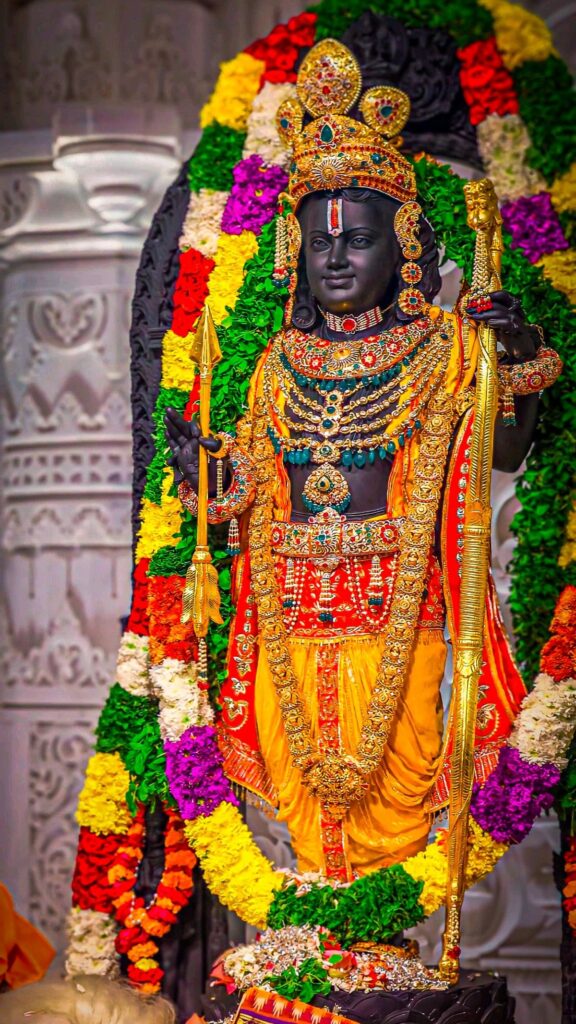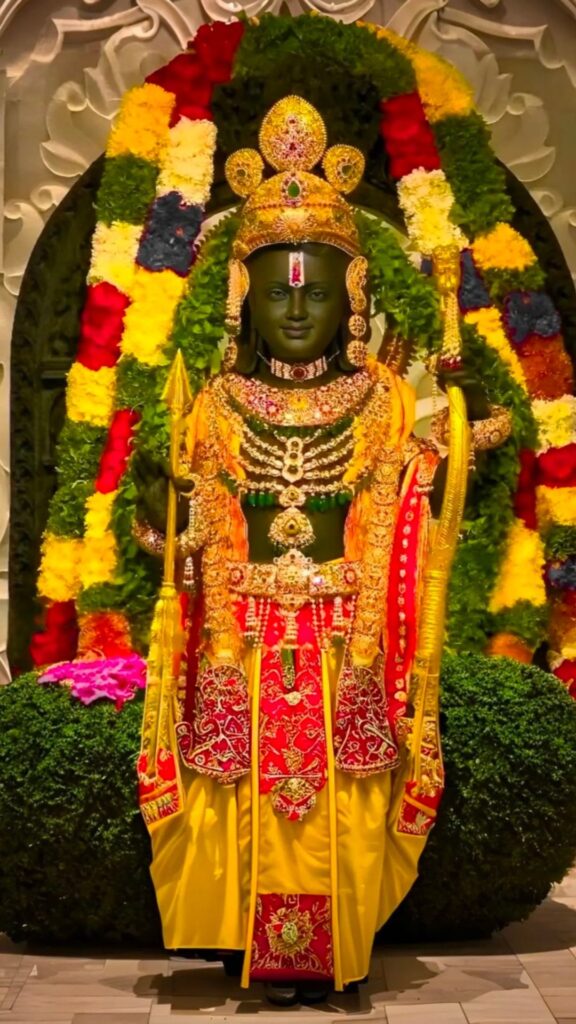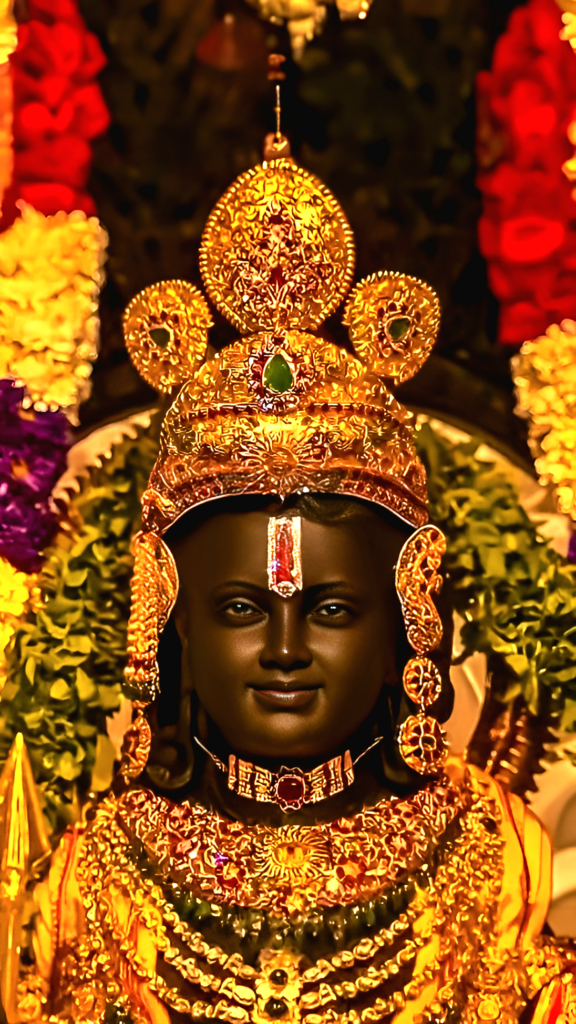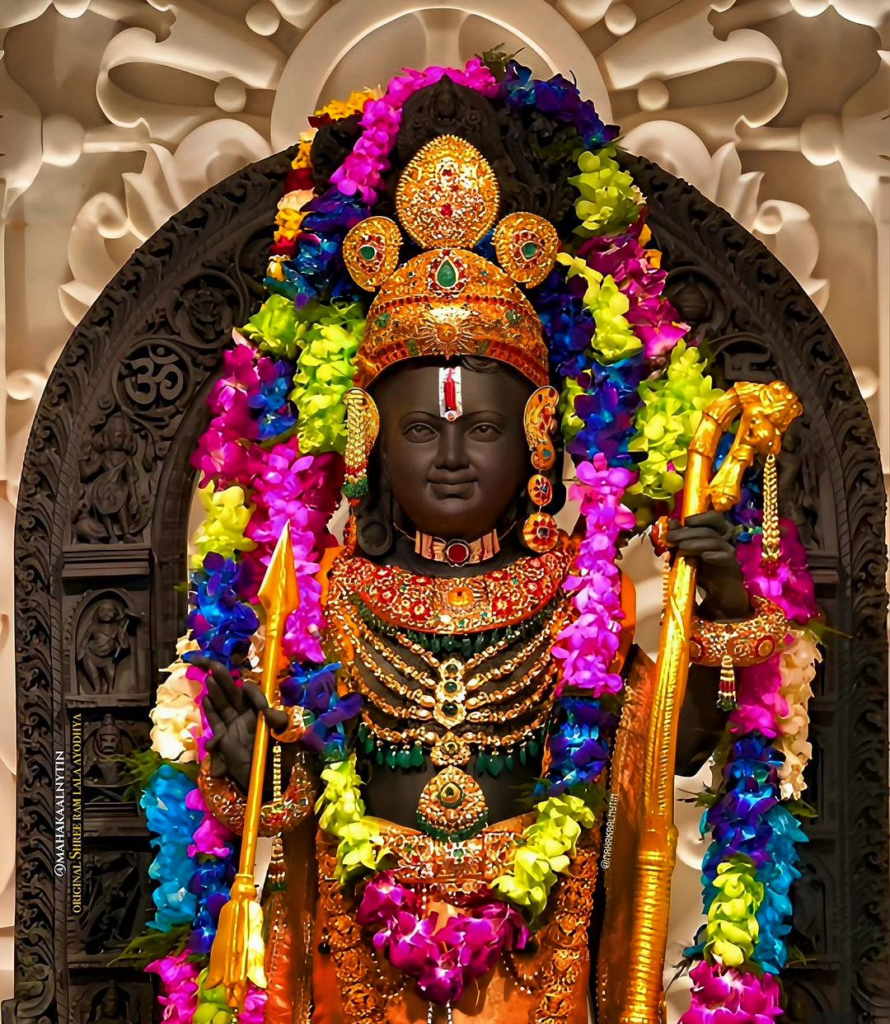Ram Lalla Idol
Ram Lalla Idol – 1

Ram Lalla Idol 2

Ram Lalla Idol 3

Ram Lalla Idol 4

Ram Lalla Idol 5

The Ram Lalla idol holds a profound place in the hearts of millions of devotees around the world. This sacred figure represents not just the physical form of Lord Ram as a child (Lalla means ‘little boy’ in Hindi), but also the devotion, love, and reverence that people across India, and beyond, have for him. The Ram Lalla idol, located in Ayodhya, Uttar Pradesh, is a deeply symbolic and spiritually significant representation of Lord Ram’s divine presence.
The story of the Ram Lalla idol is interwoven with centuries of devotion, historical events, and political struggle. The idol is not just a religious symbol, but also a cultural emblem that has been the focus of one of the most significant and long-standing religious and political disputes in India: the Ram Janmabhoomi conflict. This article delves deep into the history, significance, and cultural relevance of the Ram Lalla idol, and explores how it continues to inspire devotion and faith today.
Contents
The Historical Background of Ram Lalla
The story of the Ram Lalla idol is deeply connected to the ancient city of Ayodhya, which is regarded as the birthplace of Lord Ram, the seventh avatar of the Hindu god Vishnu. According to the epic Ramayana, Lord Ram was born to King Dasharatha and Queen Kaushalya in Ayodhya, where he later ruled as a virtuous and righteous king. For centuries, Ayodhya has been considered one of the holiest cities in India, attracting millions of pilgrims who come to pay their respects to Lord Ram.
The term “Ram Lalla” refers to the child form of Lord Ram. In Hinduism, the child forms of gods and goddesses hold a special place in the hearts of devotees. Ram Lalla, in particular, is seen as an embodiment of purity, innocence, and divine love. The image of Lord Ram as a child evokes feelings of tenderness and devotion, drawing devotees closer to their deity.
The physical Ram Lalla idol is believed to have been placed in the Ram Janmabhoomi area, the site that is considered to be the birthplace of Lord Ram. This site has been at the center of religious and political contention for many years, primarily because of the Babri Masjid, a mosque that was constructed on the same land in 1528 by the Mughal emperor Babur.
For centuries, Hindus claimed that the mosque was built over a pre-existing temple dedicated to Lord Ram. This led to numerous conflicts, and the site remained a point of contention until December 6, 1992, when the Babri Masjid was demolished by a group of Hindu nationalists, sparking nationwide protests and communal violence. Following the demolition, the Ram Lalla idol was placed at the site, and a makeshift temple was erected.
Ram Lalla and the Ram Janmabhoomi Movement
The Ram Janmabhoomi movement has played a significant role in the history of the Ram Lalla idol. The movement began in the 1980s, with several Hindu organizations campaigning for the construction of a Ram temple at the disputed site in Ayodhya. The movement was driven by the belief that Lord Ram’s birthplace was the exact spot where the Babri Masjid once stood.
In 1989, a crucial moment in the movement occurred when the Vishwa Hindu Parishad (VHP), along with other Hindu organizations, installed a Ram Lalla idol at the disputed site. This act symbolized the reclaiming of the land for the purpose of constructing a grand temple in honor of Lord Ram. The placement of the idol also marked the beginning of a long legal battle, as both Hindu and Muslim groups laid claim to the land.
The Ram Lalla idol became the centerpiece of the dispute, with millions of Hindus worshipping the child form of Lord Ram at the makeshift temple. The idol was treated with the utmost respect and devotion, with daily prayers and rituals being performed by priests. Despite the ongoing legal and political tensions, the presence of the Ram Lalla idol served as a source of hope and inspiration for devotees.
In 2019, the Supreme Court of India delivered a landmark verdict, granting the disputed land to the Hindu community for the construction of the Ram temple. The court also ruled that a separate piece of land would be allocated to the Muslim community for the construction of a mosque. This verdict brought an end to the decades-long legal battle, and the foundation for the Ram Mandir was laid in August 2020 by Prime Minister Narendra Modi.
The Significance of the Ram Lalla Idol
The Ram Lalla idol is not merely a religious artifact; it is a deeply symbolic representation of faith, devotion, and the divine presence of Lord Ram. For Hindus, the idol embodies the virtues and values that Lord Ram stands for: righteousness, courage, compassion, and devotion to duty. The child form of Lord Ram reminds devotees of his purity and innocence, qualities that are essential in the spiritual path.
Here are some of the key reasons why the Ram Lalla idol holds such significance:
1. Spiritual Symbolism
The child form of Lord Ram, known as Ram Lalla, evokes feelings of affection and devotion among devotees. In Hinduism, child deities are often seen as embodiments of innocence and purity, qualities that are revered in spiritual practice. The Ram Lalla idol serves as a reminder to approach the divine with a childlike heart—free from ego, pride, and negativity.
2. The Central Focus of the Ram Janmabhoomi Temple
The Ram Lalla idol is the centerpiece of worship at the makeshift temple in Ayodhya and will remain the focal point of the new Ram Mandir once it is completed. Devotees come from all over India and the world to offer prayers and seek the blessings of Lord Ram in his child form. The presence of the idol creates a direct connection between the devotee and the deity, making the temple a powerful place of spiritual energy.
3. Cultural Identity
The Ram Lalla idol is not just a religious symbol; it is also a cultural emblem for millions of Hindus who see Lord Ram as an integral part of their cultural and religious heritage. The idol represents the continuity of faith and devotion across generations and serves as a symbol of cultural pride for the Hindu community.
4. A Source of Devotional Inspiration
For devotees, the Ram Lalla idol is a source of inspiration and guidance in their spiritual journey. Lord Ram’s life, as depicted in the Ramayana, is a moral and ethical guide, and the child form of Ram Lalla reminds devotees of the virtues of kindness, humility, and righteousness that they should strive to emulate in their own lives.
Types of Ram Lalla Idols
As the child form of Lord Ram is revered across the Hindu world, there are several variations of the Ram Lalla idol that devotees can find, each with its own unique representation of the divine. These idols are often made from various materials, including stone, marble, bronze, and wood, and are used for both temple worship and home altars.
Here are some common types of Ram Lalla idols:
1. Marble Ram Lalla Idol
Marble is one of the most popular materials used for creating Ram Lalla idols. These idols are often intricately carved, with fine details that capture the divine beauty of Lord Ram as a child. Marble idols are commonly found in temples and homes, where they are used for daily worship.
2. Bronze Ram Lalla Idol
Bronze idols of Ram Lalla are highly prized for their durability and traditional aesthetic. Bronze has been used in Indian religious art for centuries, and Ram Lalla idols made from this material often have a timeless, antique appearance. These idols are often passed down through generations as family heirlooms.
3. Wooden Ram Lalla Idol
Wooden idols of Ram Lalla are also popular, particularly in rural areas where woodcarving is a traditional craft. These idols are often painted in bright colors, giving them a vibrant and lively appearance. Wooden idols are typically used in smaller home altars or for personal devotion.
4. Miniature Ram Lalla Idol
Miniature idols of Ram Lalla are popular among devotees who wish to carry a small representation of the deity with them for personal protection and guidance. These idols are often made from brass or silver and are small enough to be placed in a purse or carried in a pocket.
5. Decorative Ram Lalla Idol
Some Ram Lalla idols are created as decorative pieces, often adorned with gold leaf, jewels, and other embellishments. These idols are typically used in homes during festivals or special religious ceremonies and are often treated as sacred objects of devotion.
The Role of Ram Lalla Idol in Festivals and Rituals
The Ram Lalla idol plays a central role in many Hindu festivals and rituals, especially those dedicated to Lord Ram. Some of the most important festivals where the Ram Lalla idol is worshipped include:
Ram Navami, which celebrates the birth of Lord Ram, is one of the most important festivals associated with the Ram Lalla idol. On this day, devotees perform special prayers and rituals to honor the child form of Lord Ram, seeking his blessings for peace, prosperity, and protection. The Ram Lalla idol is often adorned with flowers and new clothes, and devotees offer sweets, fruits, and other items to the deity.
2. Diwali
Diwali, the festival of lights, is another occasion where the Ram Lalla idol is worshipped. Diwali commemorates Lord Ram’s return to Ayodhya after defeating the demon king Ravana and rescuing his wife Sita. During this festival, the Ram Lalla idol is placed in homes and temples, where devotees light lamps and offer prayers to Lord Ram.
3. Dussehra
Dussehra celebrates the victory of Lord Ram over Ravana, symbolizing the triumph of good over evil. On this day, the Ram Lalla idol is often placed at the forefront of processions and rituals, reminding devotees of Lord Ram’s bravery, righteousness, and commitment to dharma (moral duty).
Conclusion: The Enduring Legacy of Ram Lalla Idol
The Ram Lalla idol stands as a timeless representation of faith, devotion, and the divine qualities that Lord Ram embodies. For millions of Hindus, the child form of Lord Ram is not just an object of worship but a source of inspiration, guidance, and protection. The Ram Lalla idol, with its rich historical and cultural significance, continues to play a central role in the spiritual lives of devotees.
As the construction of the Ram Mandir progresses in Ayodhya, the presence of the Ram Lalla idol at the temple site serves as a powerful symbol of the devotion and dedication of millions of people who have waited for decades to see their dream of a grand temple dedicated to Lord Ram become a reality. For those who cannot visit Ayodhya, the presence of a Ram Lalla idol in their home allows them to connect with the divine and experience the blessings of Lord Ram in their daily lives.
